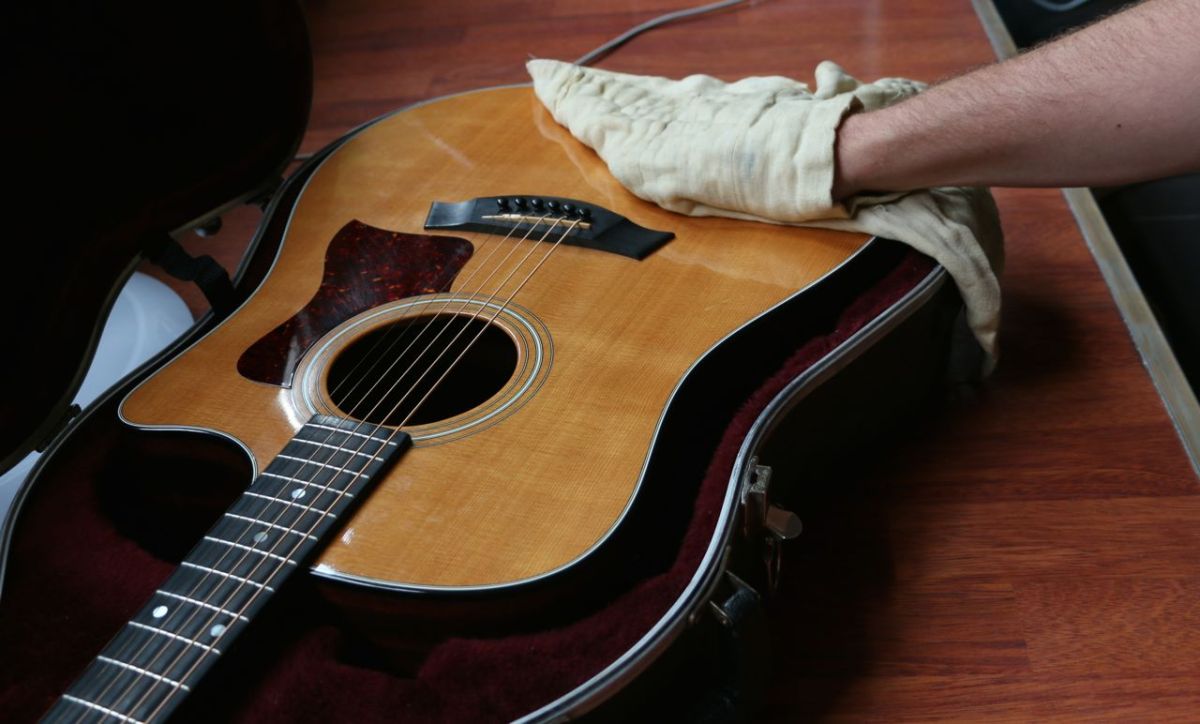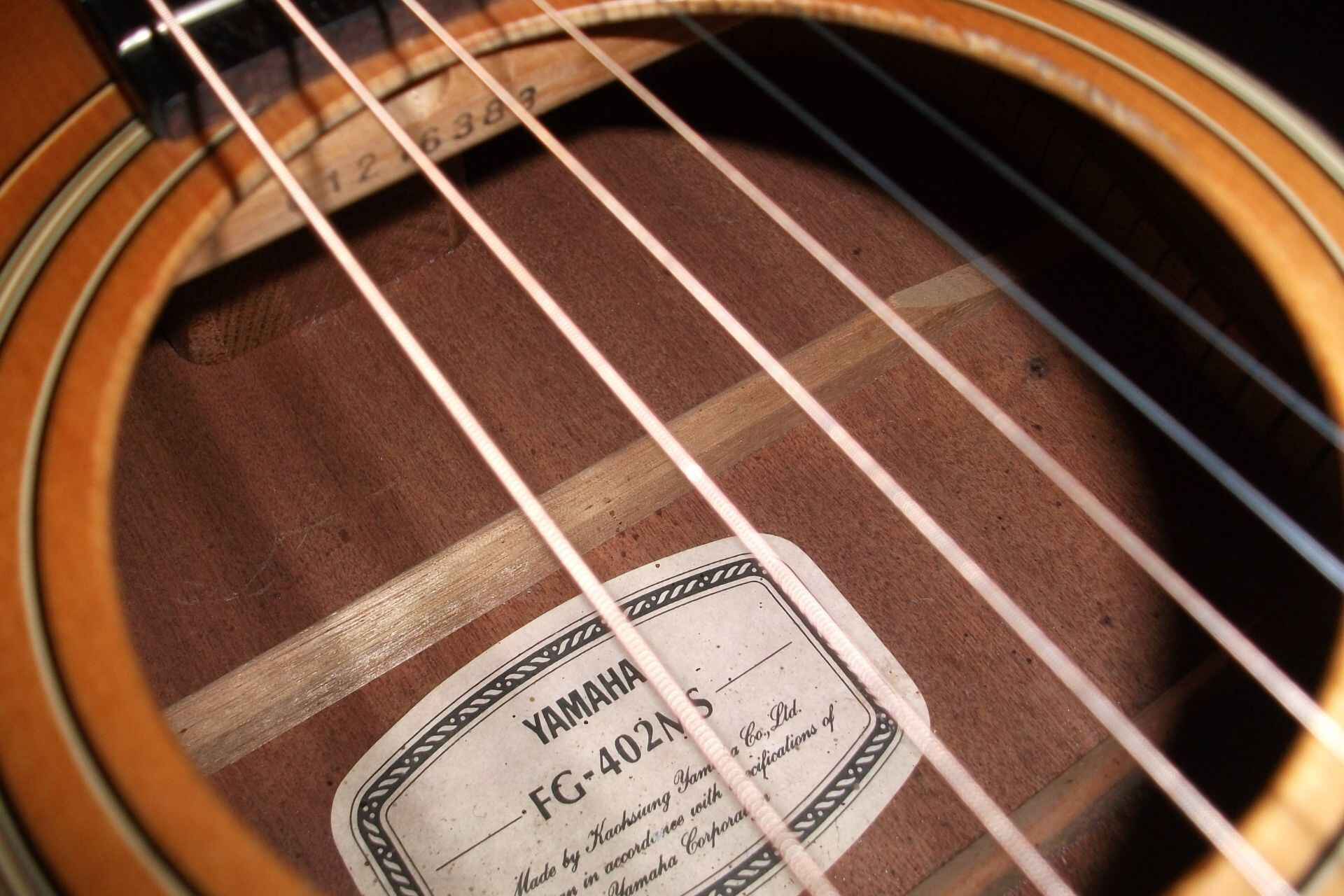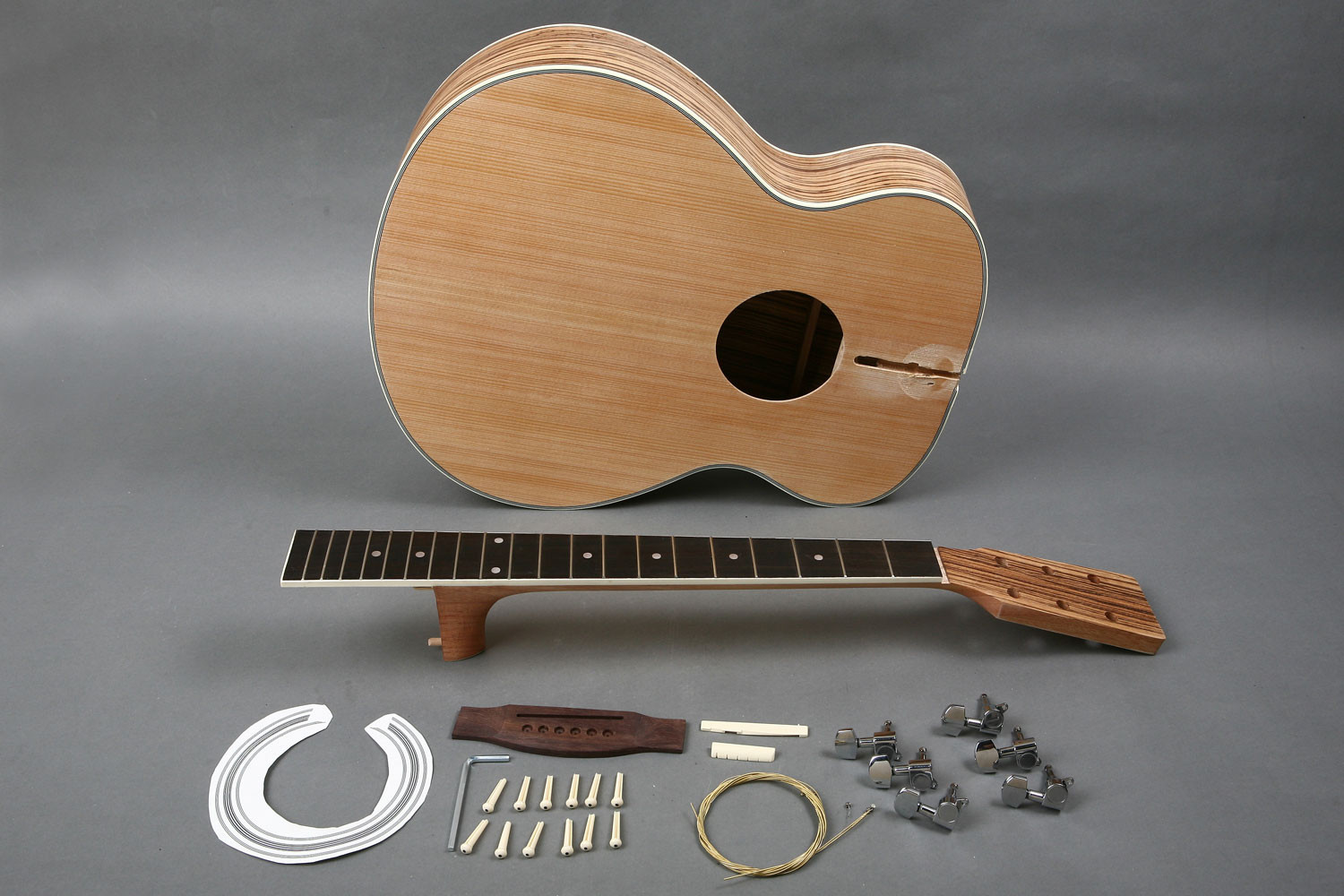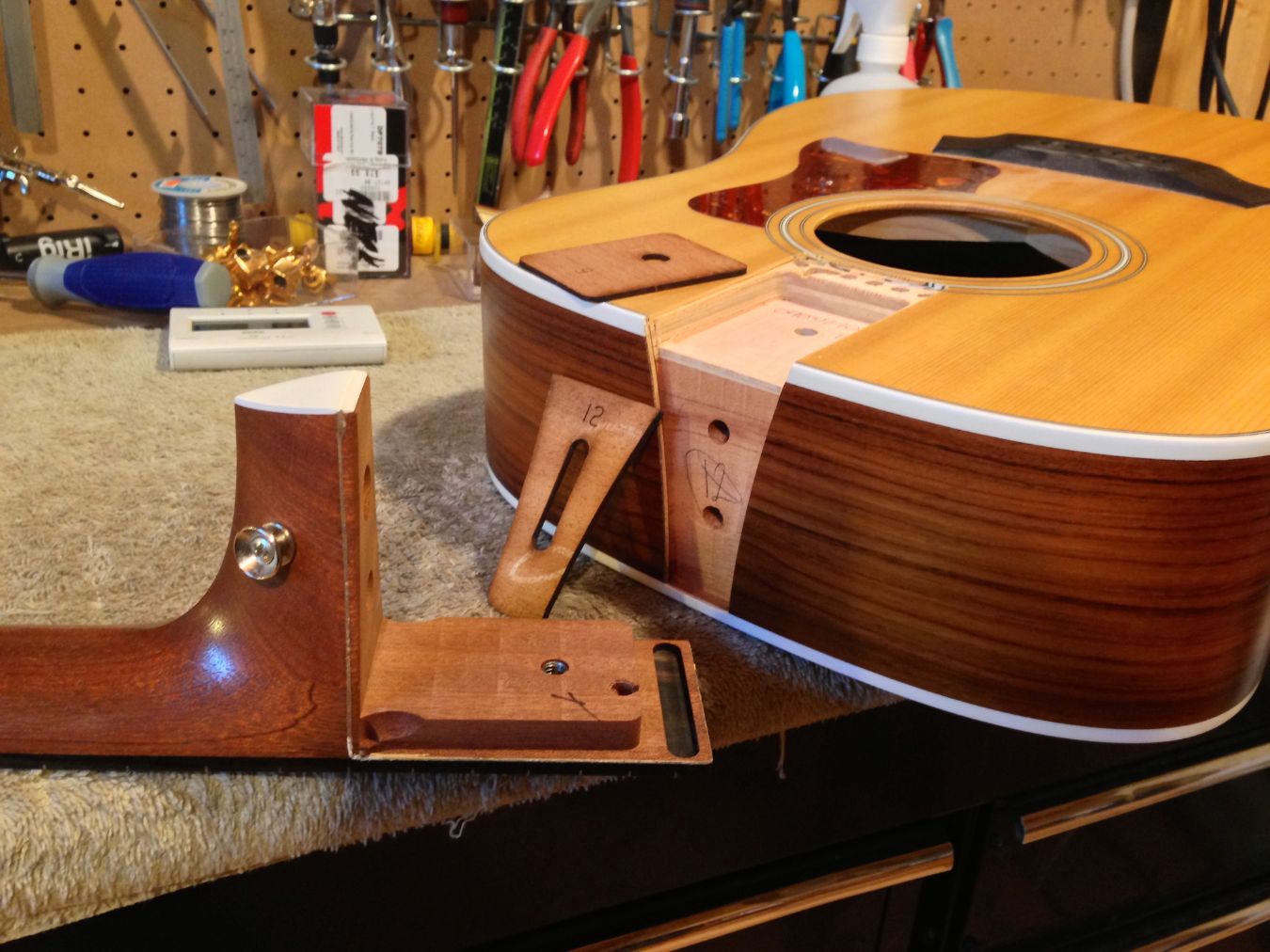Introduction
When it comes to acoustic guitars, the finish on the body plays a crucial role in not only enhancing its aesthetics but also protecting the wood from wear and tear. The finish can significantly impact the overall tone and resonance of the instrument. Whether you’re a musician looking to purchase a new acoustic guitar or a guitar enthusiast curious to know more about different finishes, determining the finish on an acoustic guitar body can provide valuable insights.
Understanding the type of finish used on a guitar body can offer valuable information about its durability, maintenance requirements, and even its potential resale value. Factors such as visual appearance, tactile feel, chemical properties, and acoustic characteristics can all come into play when determining the type of finish used on an acoustic guitar body.
In this article, we will explore the various methods and considerations involved in determining the finish on an acoustic guitar body. By examining factors such as visual appearance, tactile feel, chemical properties, and even acoustic characteristics, we will equip you with the knowledge you need to make an informed decision or deepen your understanding of acoustic guitar finishes.
Whether you’re a beginner guitarist or an experienced player, understanding guitar finishes can help you choose the right instrument for your needs and preferences. So, let’s dive into the world of acoustic guitar finishes and uncover the secrets that lie beneath the surface.
Factors to Consider in Determining the Finish on an Acoustic Guitar Body
When determining the finish on an acoustic guitar body, there are several factors to consider. These factors can provide valuable insights into the type of finish used and its characteristics. Let’s explore some key factors:
- Visual Appearance: The first factor to consider is the visual appearance of the guitar body. The finish may vary in terms of color, glossiness, or even texture. Common finishes include high-gloss, satin, or even natural finishes that showcase the wood’s natural grain patterns.
- Tactile Feel: The tactile feel of the finish is another important aspect to evaluate. Some finishes may have a smooth and polished texture, while others may feel slightly rough or even textured. Consider the comfort and tactile preference when assessing the finish.
- Chemical Properties: Understanding the chemical properties of the finish can provide insights into its durability, resistance to scratches or stains, and its interaction with cleaning agents. Different finishes may have different chemical compositions, such as nitrocellulose lacquer, polyurethane, or polyester.
- Acoustic Characteristics: The finish on an acoustic guitar body can influence its acoustic characteristics. Some finishes, like thick polyurethane coatings, may dampen the resonance and tone of the instrument. On the other hand, thinner finishes or natural finishes generally allow for better resonance and tonal qualities.
- Expert Consultation: If you are unsure about the type of finish used on a guitar body, consulting an expert or a knowledgeable guitar technician can provide valuable insights. They can assess the finish based on their experience and provide you with a more accurate determination of the type of finish used.
By considering these factors, you can gain a deeper understanding of the finish on an acoustic guitar body. Each factor provides clues and information that helps in identifying the type of finish used, allowing you to make an informed decision or appreciate the unique characteristics of your instrument.
Visual Examination
One of the primary methods for determining the finish on an acoustic guitar body is through a visual examination. By closely observing the guitar’s body, you can gather valuable information about the type of finish used. Here are some key aspects to consider during a visual examination:
- Finish Appearance: Observe the overall appearance of the guitar’s body. Look for any signs of a coating or protective layer. Finishes can vary in color, transparency, and level of glossiness.
- Color Variation: Note if the finish exhibits any color variation. Some finishes may have an even and consistent color, while others may have subtle variations or a burst effect, where the color gradually changes from the center towards the edges.
- Texture and Sheen: Assess the texture and sheen of the finish. Finishes can range from smooth and glossy to satin or matte. Look for any texture or grain patterns that might indicate a natural or hand-applied finish.
- Seams and Edges: Examine the seams or edges of the guitar’s body where different components or pieces are joined together. Pay attention to how the finish is applied and if there are any visible transitions in the finish or signs of imperfections.
- Logo and Branding: Take notice of any logo or branding that is printed or applied on the guitar body. This information can provide clues about the manufacturer and their typical finish choices.
It’s important to remember that visual examination alone may not provide a definitive answer about the type of finish used. However, it serves as an initial step in the process and can provide valuable insights into the overall appearance and characteristics of the finish. To further confirm and gather more information, it can be beneficial to combine visual examination with other methods of determination.
Tactile Examination
In addition to visual examination, performing a tactile examination can provide further insights into the finish on an acoustic guitar body. By feeling the texture and surface of the guitar, you can gather valuable information about the type of finish used. Here are some key factors to consider during a tactile examination:
- Smoothness: Run your fingers along the surface of the guitar’s body to assess the smoothness of the finish. Some finishes may have a glass-like smoothness, while others may feel slightly rough or textured. Take note of any inconsistencies or areas where the finish feels uneven.
- Stickiness or Tackiness: Pay attention to any stickiness or tackiness of the finish. Some finishes, particularly certain types of lacquers, may have a slightly sticky or tacky feel. This can be an indication of an older or vintage finish, as modern finishes tend to dry to a non-sticky state.
- Depth: Determine if the finish appears to have depth. Some finishes, such as those with multiple layers or a high-gloss coating, can create a sense of depth that enhances the visual appeal of the guitar’s body.
- Reaction to Heat: Gently apply heat to a small inconspicuous area of the guitar body and observe how the finish reacts. Some finishes may soften or even melt upon exposure to heat, while others remain unaffected. This test can help differentiate between different types of finishes.
- Overall Comfort: Consider the overall comfort and feel of the finish as you hold and play the guitar. The finish should not hinder your ability to move your hand along the neck or create any discomfort during extended playing sessions.
A tactile examination can provide valuable information about the texture, smoothness, and overall feel of the finish on an acoustic guitar body. However, it is important to note that this method alone may not provide a definitive answer. To achieve a more conclusive determination, it is advisable to combine the tactile examination with other methods of determining the finish on the guitar body.
Chemical Examination
In addition to visual and tactile examinations, a chemical examination can provide further insights into the finish on an acoustic guitar body. This method involves testing the reaction of the finish to certain chemicals, which can help identify the type of finish used. Here are some key considerations for a chemical examination:
- Nitrocellulose Lacquer: One common type of finish used on acoustic guitars is nitrocellulose lacquer. To determine if the guitar has a nitrocellulose lacquer finish, gently rub a small area of the body with acetone or nail polish remover on a cloth. If the finish softens or dissolves, it is likely nitrocellulose lacquer. However, exercise caution when performing this test, as excessive or prolonged exposure to acetone can damage the finish.
- Polyurethane or Polyester: Polyurethane or polyester finishes are more resistant to solvents like acetone. To test for these finishes, apply a small amount of rubbing alcohol or denatured alcohol on a cloth and rub a small area of the body. If the finish remains intact, it is likely a polyurethane or polyester finish.
- Water Resistance: Many modern finishes, such as polyurethane, polyester, or some water-based finishes, are resistant to water. You can test the water resistance of the finish by placing a few drops of water on a discreet area of the guitar body. If the water beads up and does not penetrate or leave a mark, it is an indication of a water-resistant finish.
- Reaction to Cleaning Products: Some finishes may be more sensitive to certain cleaning products. Test a small, inconspicuous area of the body with a gentle guitar cleaner or polish to see if there is any adverse reaction or damage to the finish. Note that not all finishes react the same way, so it’s essential to follow manufacturer recommendations for cleaning and maintenance.
- Additional Tests: Depending on the type of finish you suspect, there may be additional specialized tests that can be conducted. However, it is crucial to exercise caution when performing chemical tests and consider seeking professional advice if you are uncertain.
A chemical examination can provide valuable clues about the type of finish on an acoustic guitar body. However, it is essential to conduct these tests carefully and sparingly to avoid damaging the finish. If in doubt, it is recommended to consult a professional or knowledgeable guitar technician for assistance in determining the type of finish.
Acoustic Examination
Aside from visual, tactile, and chemical examinations, conducting an acoustic examination can provide valuable insights into the finish on an acoustic guitar body. This method focuses on evaluating the impact of the finish on the instrument’s sound and resonance. Here are some key considerations for an acoustic examination:
- Tone and Resonance: Listen attentively to the tone and resonance of the guitar while playing it. Different finishes can have varying effects on the instrument’s sound. Some finishes may enhance or dampen certain frequencies, affecting the overall tone and resonance of the guitar.
- Sustain: Pay attention to the sustain of the guitar notes. A thinner finish or a finish that allows the wood to vibrate more freely may result in longer sustain, whereas a thicker or more restrictive finish may shorten the sustain.
- Projection: Evaluate the projection of the guitar. Some finishes can affect the guitar’s ability to project sound. A finish that allows the wood to vibrate more freely may result in a louder and more resonant projection, while a thicker or more rigid finish may inhibit sound projection.
- Vibration Transfer: Observe how well the guitar body transfers the vibrations from the strings to the soundboard. The finish should not hinder or dampen the transfer of vibrations, as this can impact the volume and overall responsiveness of the instrument.
- Comparative Analysis: Compare the acoustic characteristics of guitars with different finishes. Explore the tonal differences between guitars with nitrocellulose lacquer, polyurethane, or other types of finishes. This comparative analysis can help you understand the influence of different finishes on the guitar’s sound.
Keep in mind that the acoustic examination should be conducted in a controlled environment with minimal background noise and with consistent playing techniques. It is important to note that while the finish can impact the acoustic characteristics of a guitar, other factors such as the wood quality, construction, and even the player’s technique also play significant roles.
An acoustic examination can provide valuable insights into how the finish on an acoustic guitar body affects its sound and overall performance. It is recommended to try out different guitars with various finishes to better understand and appreciate the acoustic differences they offer.
Expert Consultation
If you are uncertain or want a more accurate determination of the finish on an acoustic guitar body, consulting an expert or a knowledgeable guitar technician can provide valuable insights. These individuals have extensive experience and expertise in identifying different types of finishes and can offer professional guidance. Here are some reasons why expert consultation can be helpful:
- Experience and Expertise: Guitar technicians and experts have a deep understanding of various finishes used on acoustic guitars. They have encountered and examined numerous guitars, allowing them to accurately assess and determine different finishes.
- Specialized Knowledge: These professionals stay up-to-date with the latest advancements and trends in guitar finishes. They possess specialized knowledge about specific manufacturers, brands, and models, which can aid in identifying the type of finish.
- Reference Materials and Resources: Experts often have access to reference materials, resources, and industry guidelines that can assist in the identification process. They can refer to catalogs, manufacturer specifications, or historical data to determine the most likely finish used on a particular guitar.
- Confirming Visual and Tactile Examination: Experts can provide a second opinion and confirm the results of your visual and tactile examinations. Their trained eye and experience can validate your observations and provide additional insights.
- Preserving Value and Authenticity: If you own a vintage or rare acoustic guitar, expert consultation becomes even more crucial. They can help determine the originality, authenticity, and potential value of the instrument based on the finish used.
When seeking expert consultation, it is advisable to provide accurate details and, if possible, photographs of the guitar body. This information can assist the expert in their assessment and increase the accuracy of their determination.
By consulting an expert or a knowledgeable guitar technician, you can benefit from their experience, specialized knowledge, and resources in determining the finish on an acoustic guitar body. Their expertise can provide valuable insights and give you a more definitive answer about the type of finish used.
Conclusion
Determining the finish on an acoustic guitar body is an intriguing process that involves careful examination and consideration of various factors. By conducting a visual examination, evaluating the tactile feel, performing a chemical analysis, and even assessing the acoustic characteristics, valuable insights can be gained.
Through a visual examination, we can observe the overall appearance, color variation, texture, and branding, which all provide clues about the type of finish used. The tactile examination allows us to feel the smoothness, stickiness, depth, and overall comfort of the finish. Chemical examinations, while requiring caution, can help to identify the presence of nitrocellulose lacquer, polyurethane, or other finishes, as well as determine resistance to water and reactiveness to cleaning products. An acoustic examination provides insights into the impact of the finish on the tone, sustain, projection, and vibration transfer of the guitar.
While these methods can offer valuable information, consulting an expert or a knowledgeable guitar technician can provide a more accurate determination, as they possess specialized knowledge, expertise, and access to reference materials. They can help confirm observations and provide professional guidance based on their experience.
By understanding the factors involved in determining the finish on an acoustic guitar body, guitar enthusiasts and musicians can make informed decisions when purchasing a guitar or deepen their appreciation and knowledge of their existing instruments. Remember that the finish type not only influences the aesthetics but also affects the sound, durability, and maintenance requirements of the guitar.
So, whether you’re admiring the high-gloss sheen of a nitrocellulose lacquer, appreciating the natural grain with a satin finish, or reveling in the unique character of a vintage instrument, understanding the finish on an acoustic guitar body adds another layer of appreciation and knowledge to your musical journey.

























